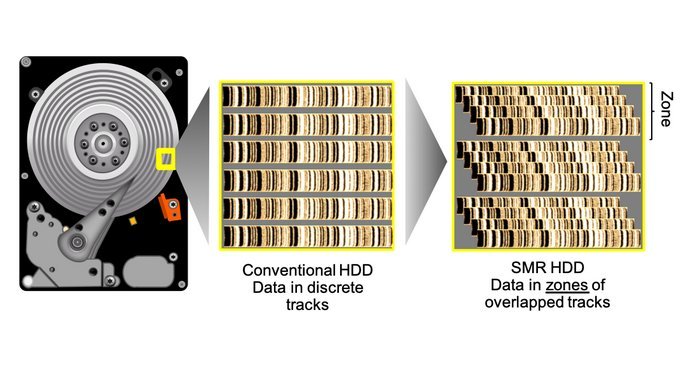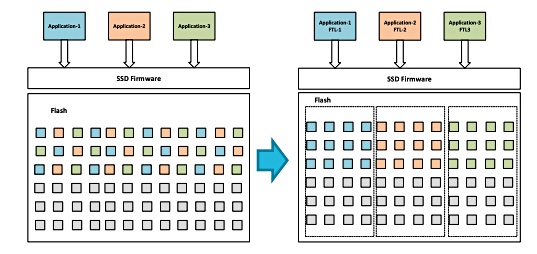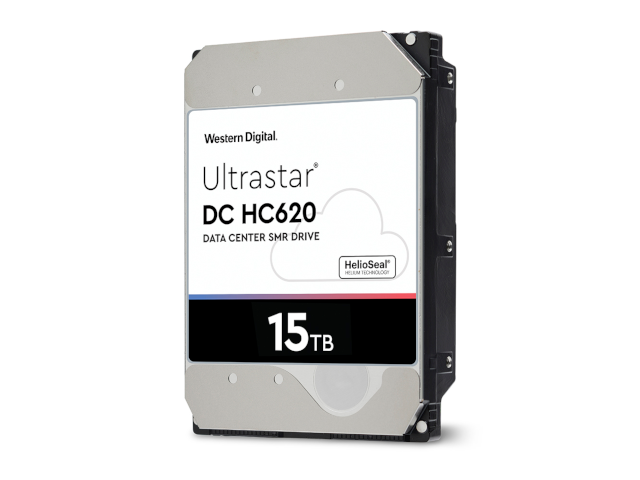Western Digital wants to help cloud and hyperscale data centres store data more efficiently in the Zettabyte Era.
In an initiative launched yesterday, the storage giant threw its weight behind emerging zoned storage technologies such as zoned namespaces (ZNS) for SSDs and shingled magnetic recording (SMR) in hard drives.
The world will generate around 103 zettabytes of data per year by 2023, and this is a problem, Western Digital said.
Current data storage infrastructure is too inefficient to store all of this cost-effectively. And so the industry is seeking new approaches that offer better performance with lower TCO.
Western Digital believes that more and more of this data will be sequential or streaming in nature – written once only but accessed many times. It cites music, video, IoT sensor data and large AI/ML datasets as typical examples.
Because of this, approaches that optimally place data onto the storage medium rather than writing blocks into the first available space will make more efficient use of the storage capacity. This is where zoning comes in.
Zoning comes about because of separate but parallel developments in hard drives and SSDs.
In SMR hard drives, the shingled writing of tracks makes them overlap slightly, which does not affect reading but means that rewriting a single track would alter any others that it overlays.
For this reason overlapping tracks are grouped into bands called zones, and if any of the tracks need to be modified or re-written, the entire zone must be re-written.
Zoned Storage
Western Digital’s response to this is called the Zoned Storage initiative and includes ZonedStorage.io, a repository for open-source and standards-based tools and resources for ZNS and SMR. The aim is to jump-start application development initiatives and to help data centre engineers take advantage of zoned storage technologies.
According to Western Digital, SMR and ZNS will be key foundational building blocks of the new zettabyte era by delivering intelligence to application architectures.
In a statement provided by Western Digital, IDC, analyst Ashish Nadkarni said:
“Unifying the ZNS and SMR architectures via open, standards-based initiatives is a logical industry step, which can take advantage of SMR HDD areal density gains and new innovations in flash. Whoever enters the market first, will definitely have a competitive advantage on TCO and the learning curve.”

Western Digital thinks SMR drives are part of the solution to hyperscale data issues because growth in SMR areal density will track closely with global data demand growth.
The firm is currently demonstrating a 20TB SMR drive that it expects to ship in 2020, and estimates that 50 per cent of the disk capacity it ships will be SMR drives by 2023.
Rewriting history
Meanwhile, SSDs already have the rewrite issue, since the architecture of flash memory is organised into blocks that must be erased before new data can be written to them. But the controller hides this complexity from the host system and applications, which just see an SSD as a hard drive.
The emerging zoned namespaces (ZNS) standard for NVMe SSDs changes this by exposing a set of zones with the requirement that each zone must be written sequentially, matching the physical SSD requirements.
This enables the host host system to place data more efficiently, making over-provisioning unnecessary. This improves the cost-effectiveness of the device as more storage space is exposed to the host.

Conventional SSD data placement vs zoned namespaces








